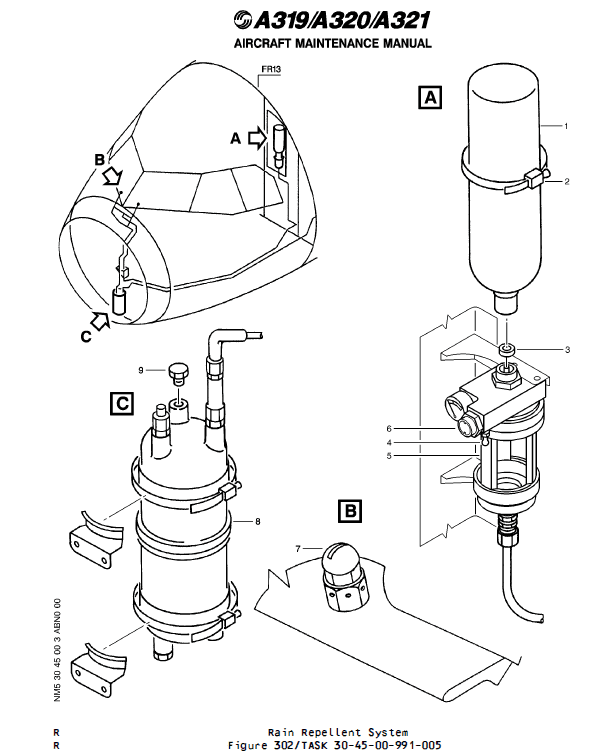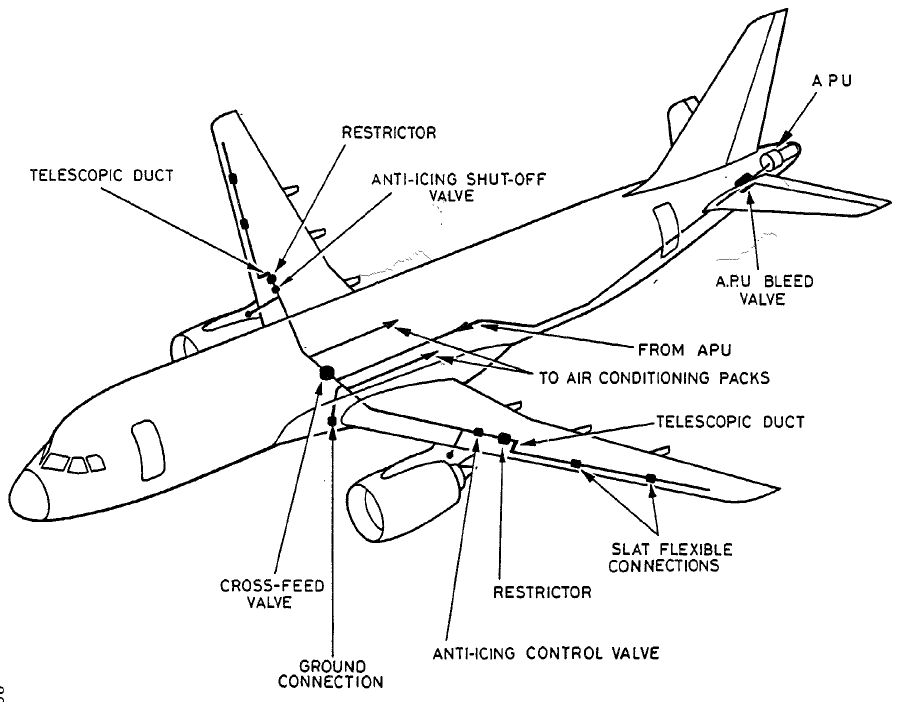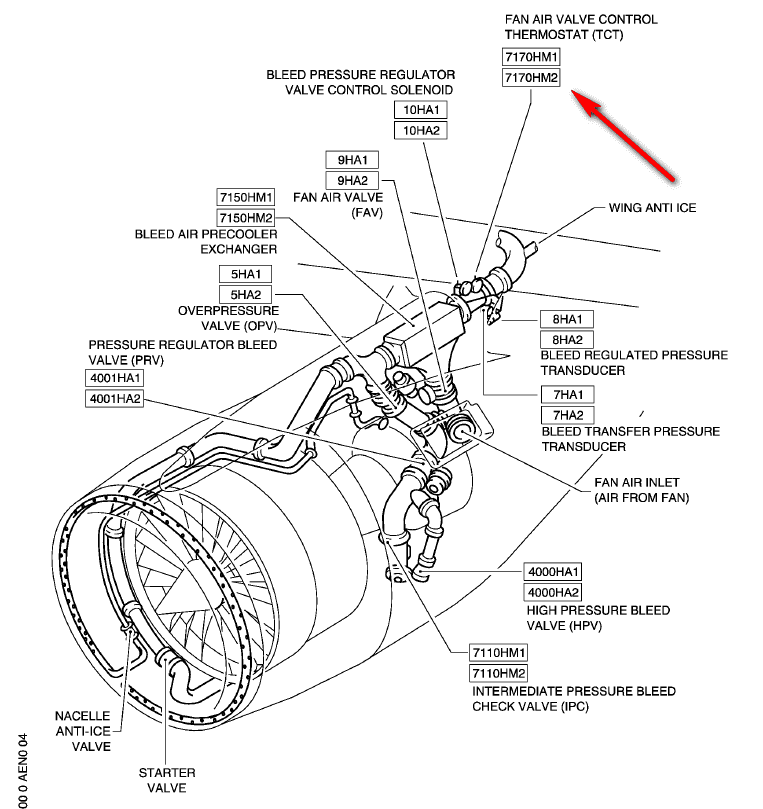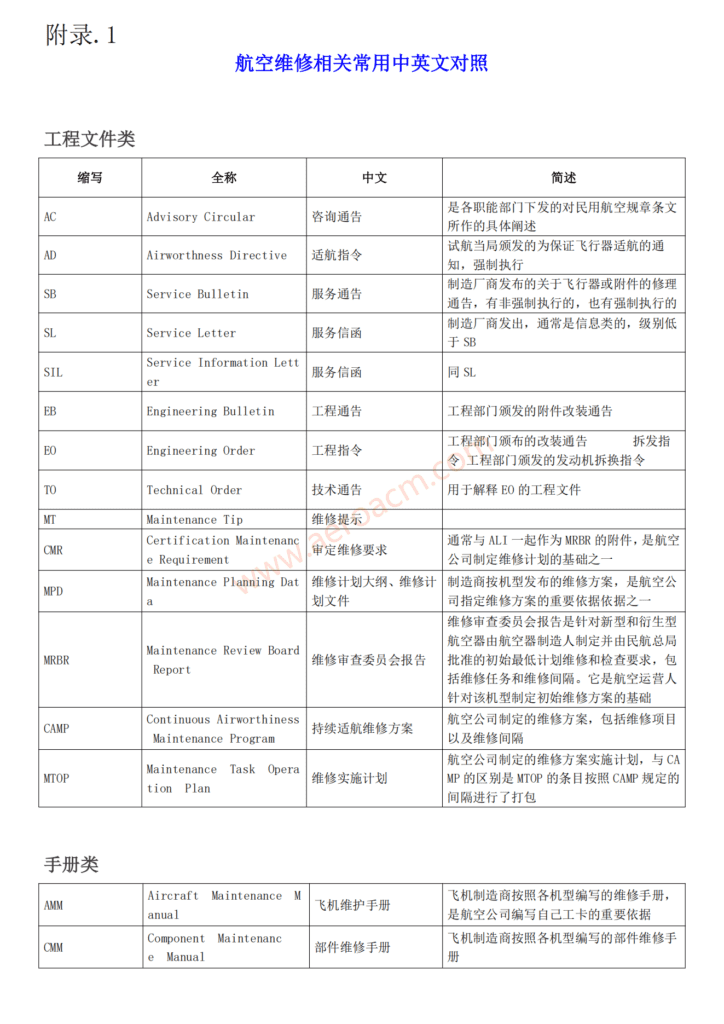1.3 Aircraft Nomenclature飞机术语
Axes of an Airplane
An airplane in flight is free to rotate about three axes: horizontal, longitudinal and vertical. Each axis is perpendicular to the others and each passes through the center of gravity.
飞机的轴线
飞行中的飞机可以绕三个轴线自由旋转:水平轴、纵向轴和垂直轴。每个轴线都相互垂直,且都穿过飞机的重心。

The three axes of an aircraft are mutually perpendicular, and all pass through the center of gravity of the aircraft.
飞机的三个轴线相互垂直,且都穿过飞机的重心。
Forces Acting on an Aircraft in Flight
作用在飞行中的飞机上的力
In straight-and-level, unaccelerated flight the forces about the aircraft center of gravity are balanced. Lift acts upward and is opposed by weight and the aerodynamic tail load which act downward. Thrust acting forward is opposed by drag which acts rearward.
在直线且水平的无加速飞行中,围绕飞机重心的力是平衡的。升力向上作用,与重力以及向下作用的空气动力尾部载荷相抵消。向前作用的推力与向后作用的阻力相抵消。
In straight-and-level, unaccelerated flight the forces about the center of gravity are balanced.
在笔直且平稳的无加速飞行中,围绕飞机重心的力是平衡的。

Types of Aircraft Structure
飞机结构的类型
Truss
A type of structure made up of longitudinal beams and cross braces. Compression loads between the main beams are carried by rigid cross braces called compression struts. Tension loads are carried by stays, or wires, that go from one main beam to the other and cross between the compression struts.
桁架
一种由纵向梁和横向支撑组成的结构类型。主梁之间的压缩载荷由刚性横向支撑(称为压缩支柱)承担。拉伸载荷由从一根主梁到另一根主梁并穿过压缩支柱的拉杆或钢丝承担。
Most fabric-covered wings are constructed with a Pratt truss. The spars are the main beams and the cross braces are the compression struts or compression ribs. The stays are the drag and antidrag wires. The drag wires run from the front spar inboard to the rear spar outboard, and oppose the drag forces that try to move the wing tips backward. The antidrag wires run from the rear spar inboard to the front spar outboard. They oppose the aerodynamic forces that try to move the wing tips forward.
大多数织物覆盖的机翼都是用普拉特桁架结构建造的。翼梁是主梁,交叉支撑是压缩支柱或压缩肋。拉线是阻力线和反阻力线。阻力线从前翼梁内侧到后翼梁外侧,与试图向后移动翼尖的阻力相抗衡。反阻力线从前翼梁内侧到后翼梁外侧,与试图向前移动翼尖的气动力相抗衡。
The Warren truss is used for the fuselage of most steel tube and fabric aircraft. The main beams are the longerons and the cross braces are steel tube diagonals which carry both compression and tension loads.
沃伦桁架用于大多数钢管和织物飞机的机身。主梁是纵梁,而交叉支撑是承受压缩和拉伸载荷的钢管对角线。
Monocoque
硬壳式
A single-shell that carries all of the flight loads in its outer surface. A chicken egg is a perfect example of a natural monocoque structure.
一种单壳结构,其外表面承受所有飞行载荷。鸡蛋是天然硬壳式结构的完美示例。
Metal monocoque aircraft fuselages have a minimum of internal structure, usually with just formers to provide the shape. Thin sheets of metal (called skins) riveted to the formers provide a rigid, strong, streamlined structure. Dents in the skins destroy the integrity of a monocoque structure.
金属硬壳飞机机身内部结构极少,通常只有骨架来提供形状。铆接在骨架上的薄金属片(称为蒙皮)构成坚固、强韧、流线型的结构。蒙皮上的凹痕会破坏单壳结构的完整性。
Wooden monocoque aircraft structures are similar to those of metal. Thin sheets of aircraft plywood are glued to the formers to provide a strong, lightweight structure.
木质硬壳飞机结构与金属结构类似。飞机胶合板的蒙皮被粘在骨架上,构成坚固、轻质的结构。
Modern composite structures are made of resins reinforced with special fabrics and formed in molds or over patterns; these provide a shell sufficiently strong to carry all the flight loads.
现代复合材料结构由树脂制成,用特殊织物加固,并在模具中成型或覆盖图案;这些材料制成的机壳足够坚固,能够承受所有飞行载荷。
Semimonocoque
半硬壳
Most larger metal aircraft have a semimonocoque structure. This differs from the monocoque by having a series of longerons and stringers between the formers to support the skins and provide additional strength.
大多数大型金属飞机采用半硬壳结构。这种结构与硬壳结构的不同之处在于,在成型件之间有一系列纵梁和弦梁,用于支撑蒙皮并提供额外的强度。





